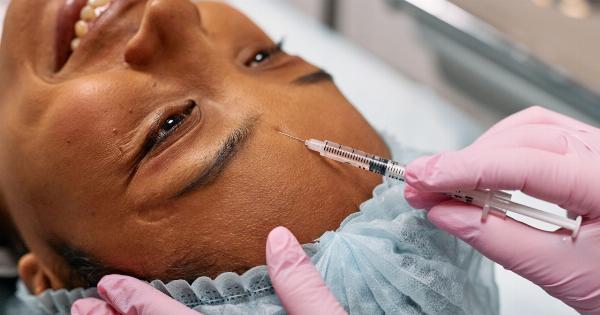Undergoing breast implant surgery is a significant decision that requires careful consideration. It is essential to be well-informed about the options available to you, including the types of breast implants, incision options, and placement options.
This article aims to provide you with the information you need to make an informed decision about your breast implant surgery.
Types of Breast Implants
When it comes to breast implant surgery, there are two main types of breast implants to choose from: saline implants and silicone implants.
Saline Implants: These implants are filled with a sterile saline solution. They are typically inserted empty and then filled once they are in place, allowing for smaller incisions.
Saline implants often have a firmer feel compared to silicone implants.
Silicone Implants: These implants are filled with silicone gel, which replicates the feel of natural breast tissue. Silicone implants are pre-filled, requiring a slightly larger incision than saline implants.
They offer a more natural look and feel, especially for women with minimal natural breast tissue.
Incision Options for Breast Implant Surgery
The choice of incision location is an important factor to consider for your breast implant surgery. There are several incision options available, each with its own advantages and considerations.
Inframammary Incision: This incision is made in the fold beneath the breast, where the breast meets the chest wall. It offers direct access to the breast pocket, allowing for precise implant placement.
The resulting scar is generally well-concealed within the natural breast crease.
Periareolar Incision: This incision is made along the lower edge of the areola, the pigmented skin surrounding the nipple.
The scar from a periareolar incision is typically well-concealed within the natural color transition between the areola and the breast skin. This incision allows for direct access to the breast pocket.
Transaxillary Incision: This incision is made within the natural crease within the armpit, allowing for a scar-free breast area.
Although it offers a scar-free breast, it may result in a less precise implant placement compared to other incision options.
Transumbilical Incision: Also known as TUBA, this incision is made within the belly button. The surgeon then creates a tunnel up to the breast area to insert the implants.
While it leaves no visible scar on the breasts, it is only suitable for saline implants and offers limited accessibility in terms of implant placement.
Placement Options for Breast Implants
When considering breast implant surgery, you also have options in terms of where the implants can be placed in relation to your existing breast tissue and chest muscles.
Subglandular Placement: In this placement option, the implants are positioned behind the breast tissue but in front of the chest muscles. It offers quicker recovery time and less discomfort during the healing process.
However, subglandular placement might be more visible, especially for women with less natural breast tissue.
Submuscular Placement: Also known as subpectoral placement, this involves positioning the implants beneath the chest muscles.
Submuscular placement provides additional tissue coverage and may result in a more natural-looking breast contour. However, it may extend the recovery period and lead to more discomfort immediately following the surgery.
Benefits of Breast Implant Surgery
Breast implant surgery, also known as breast augmentation, offers several benefits to women seeking to enhance their breasts.
Enhanced Breast Size and Shape: Breast implants can increase the size and volume of the breasts, resulting in a fuller, more proportionate appearance.
Improved Symmetry: Breast implants can help correct breast asymmetry, providing a more balanced and harmonious appearance.
Restored Breast Volume: Pregnancy, breastfeeding, weight fluctuations, and aging can cause a loss of breast volume. Breast implants can restore lost volume and give the breasts a more youthful appearance.
Boosted Self-Confidence: Breast implant surgery can significantly improve a woman’s self-image and self-esteem, leading to enhanced body confidence.
Risks and Considerations
While breast implant surgery can provide satisfying results, it is important to be aware of the potential risks and considerations associated with the procedure.
Implant Rupture or Leakage: Both saline and silicone implants can rupture or leak over time, requiring additional surgery to remove or replace the implants.
Capsular Contracture: The formation of scar tissue around the breast implants can cause tightness, discomfort, and changes in breast shape. In some cases, corrective surgery may be necessary.
Changes in Sensation: Breast implant surgery can affect nipple and breast sensation. While most women experience temporary changes, some may have permanent alterations in sensation.
Appearance and Satisfaction: It is essential to have realistic expectations and understand that breast implant surgery might not deliver the desired results or appearance. The outcome may vary depending on various factors.
Maintenance and Follow-Up: Breast implants are not lifetime devices and may require removal or replacement in the future.
Regular check-ups and follow-ups with your surgeon are necessary to ensure the long-term success of your breast implants.
Health Considerations: Although rare, there are potential complications associated with breast implant surgery, including infection, bleeding, adverse reactions to anesthesia, and unfavorable scarring.
It is crucial to discuss your medical history and any underlying health conditions with your surgeon.
Conclusion
Breast implant surgery offers women the opportunity to enhance their breasts and achieve their desired aesthetic goals.
By considering the various breast implant options, including types of implants, incision options, and placement options, women can make informed decisions that align with their preferences and expectations. It is essential to consult with a qualified and experienced plastic surgeon to discuss the available options, benefits, risks, and any concerns before undergoing breast implant surgery.

























